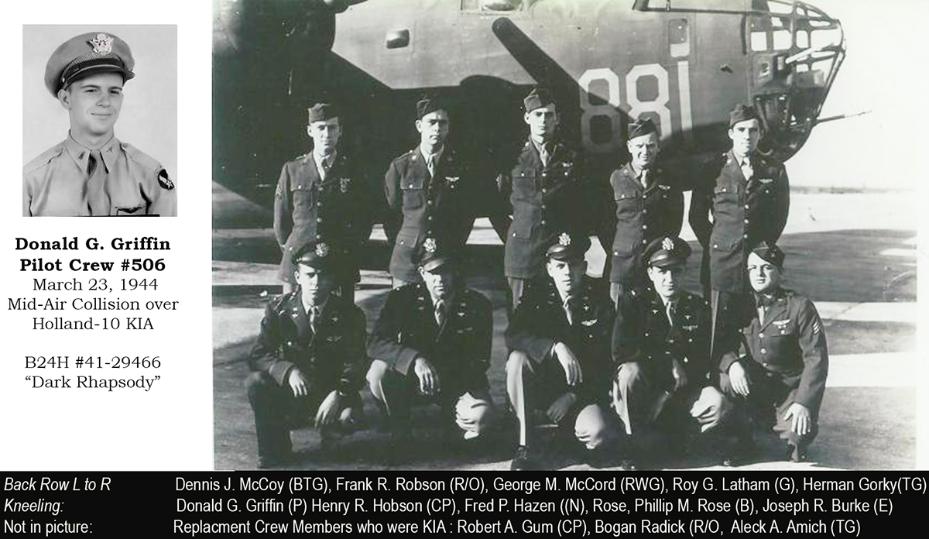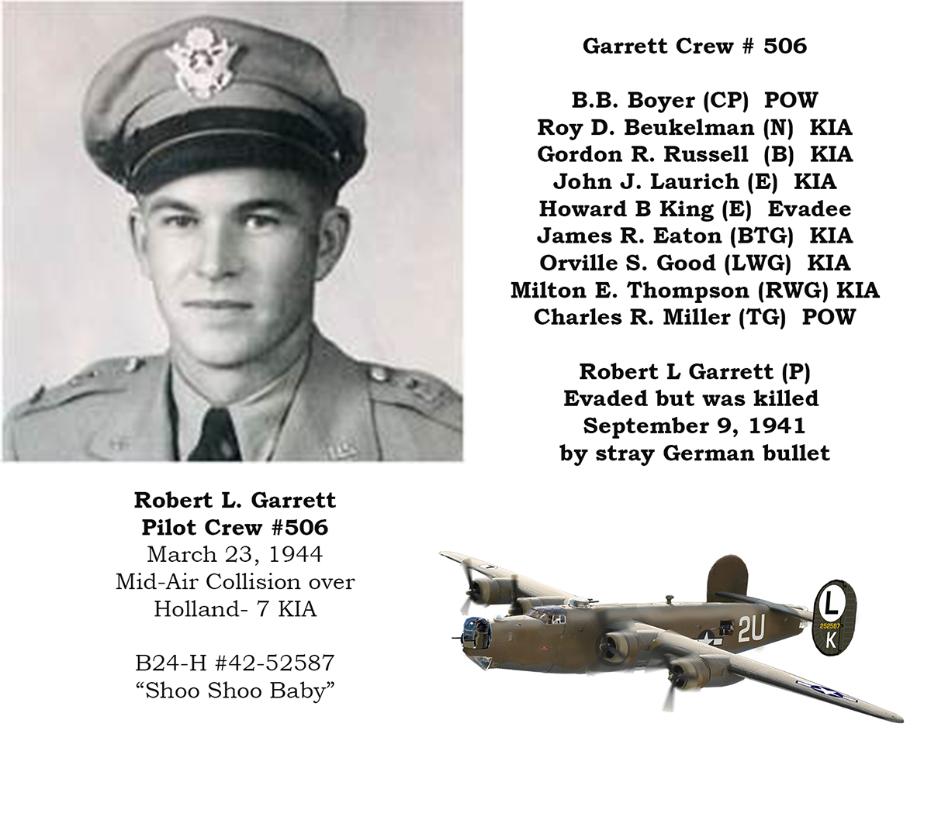
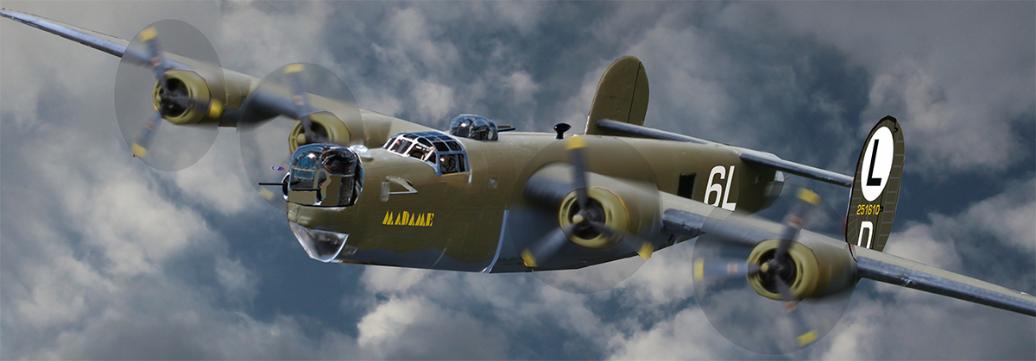
APRIL 8, 1944
It was not a good day. It was the day after Good Friday; the day before Easter. This was only the sixth combat mission for the new 466th Bombardment Group, who were based at Attlebridge in the northeastern countryside of East Anglia- England. The target was an aircraft plant in Brunswick, Germany. 31 Liberators took off in the early morning hours and spent close to 90 minutes flying in an oblong circular pattern over the North Sea near Cromer. One by one each B-24's lined up into the assigned formation position. They were loaded with fuel and bombs. By 1:45 in the afternoon bombay doors were opening near their target and the bomb run had started.
According to John Woolnaugh, who was a pilot in the lead section: “Right after we opened the bomb bay doors, I saw an indelible sight. At 12-O'Clock high, right out of the sun I saw somethng came flying at us...Up to this moment we had not seen any sign of enemy fighters... In a second... a flock of airplanes with with winking red spots on their noses. ...In the bright sunlight those red flashes meant I was looking right down their gun barrels- 20 mm cannon shooting out of the prop spinner. In another second they were flew past within feet of my wingtip..” (John Woolnaugh “Attlebridge Diaries” page 28)
The ME-109's took a huge toll on the 466th that day. 6 B-24-s were shot down:
Bryans Crew 410- 6 KIA, Sturdevant Crew 413 – 8 KIA, Kessinger Crew 616- 4 KIA, Fouts Crew 618- 1 KIA, Harris Crew #717- 1 KIA, Strom Crew 411- 1 KIA.
It was the biggest single loss day for the 466th during the entire war with 21 KIA and and 38 POW's. Pilots who were there said they never experienced that many
German fighters again.
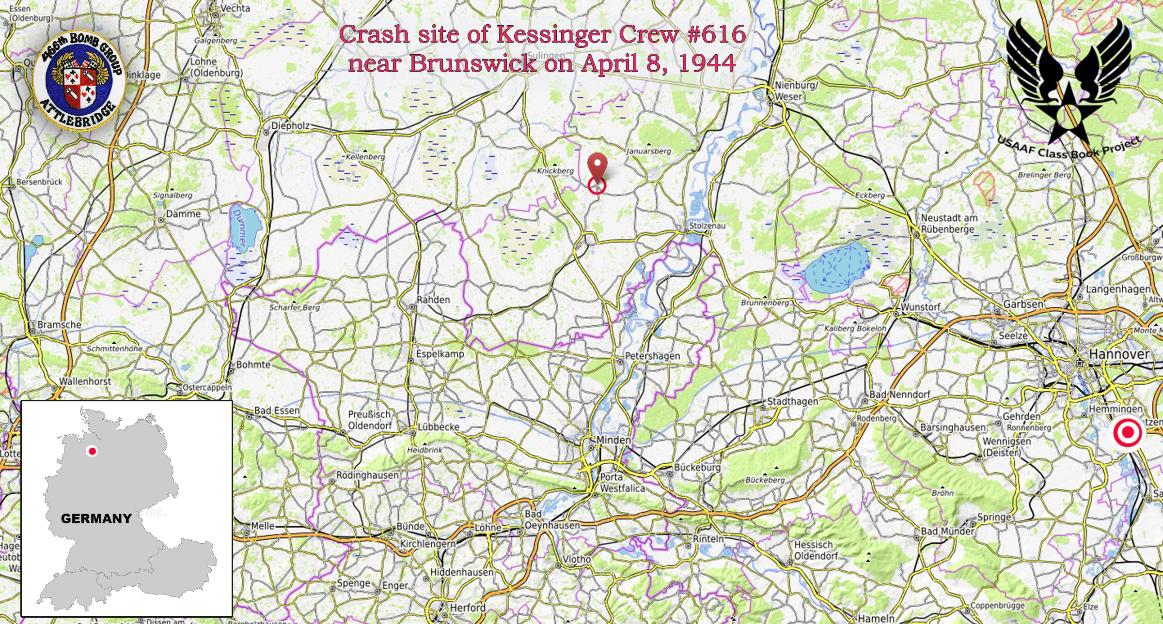
Today near Nendorf Germany, pieces of the wreckage of one of the ill-fated bombers are still being retrieved today as locals use metal detectors and dig small scraps out of the ground. This is the grave site of the Kessinger B-24 “Madame”. #42-52610. One member of the local “Aerospce Archeology Lower Saxony Club” is Erwin Scheddin. He was 12-years-old at the time said, “The explosion looked like an orange fire-ball.”
Survivors from the “Madame”, were Edward Hommer- (R/O), Lewis Straw (TG), Wallace Tyner, Co-pilot, David Orear (TT), Jacob Peltz (B), Charles Waller, (E). They described being hit by flak right after the bomb run and then being strafed by an F-190. The aircraft was badly damaged from mid section to tail. Fire broke out and the com-system was not working. The crew were forced to bail out. Kesseninger remained at the controls trying to maintain some control while his crew was escaping but was unable to get out in time. Roland Boulter, the navigator and Albert English, a gunner did not escape. Leonard Lombardo (G) bailed out prematurely and did not survive. His cause of death is unknown.
The young Pilot of “Madame” was Kenneth Kessinger. He was one of four of the 10 crew-members who did not survive the incident. He and two other crewmembers, Boulter and English bodies were retrieved from the aircraft and were buried on Easter Sunday in the village of Woltringhausen Cemetery. The burial was held in silence.
Pilot of the the “Madame” Kenneth Robert “Bob” Kessinger was 26 years-old in 1944. After graduating from high schol in Goodland, Kansas, He did a 3-year Pre-Medic course at University of Colorado. He then received officer training with the U.S. Marine Corps before enlisting in the Army Air Corps as a flying cadet. He departed the states with his crew and arrived in England on March 13, 1944.
His remains and those of his two crewmembers, Roland Boulter his navigator and the right waist gunner ,Albert English were removed in 1950 and reinterred at the American Cemetery in the Ardennes in Belgium.
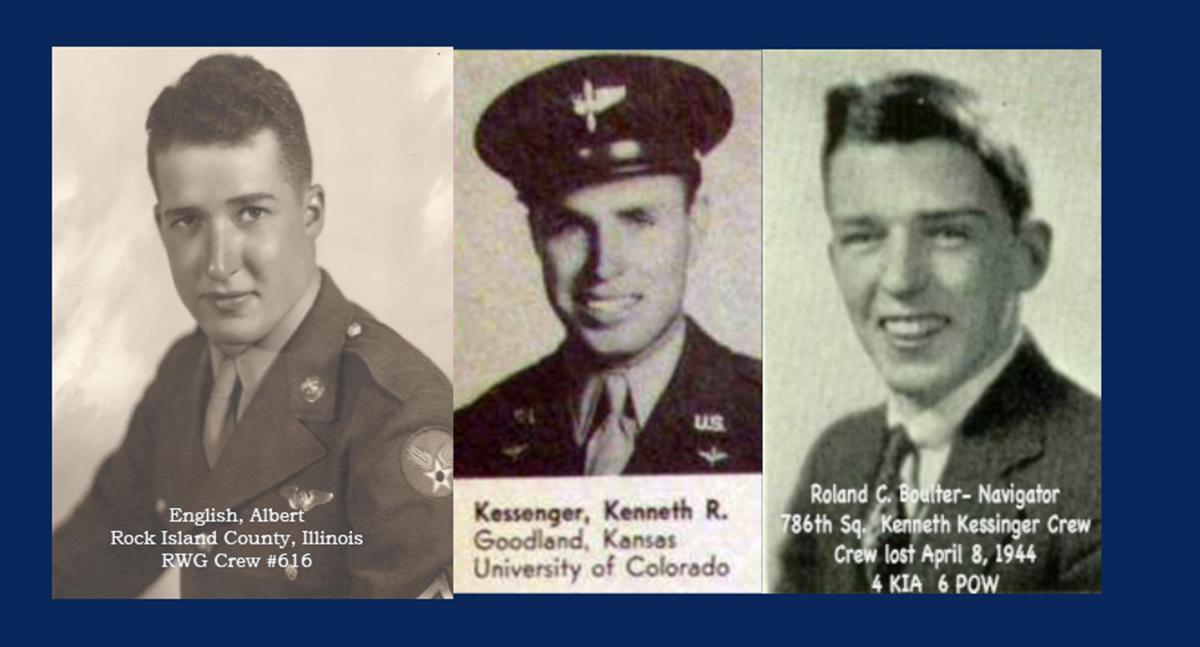
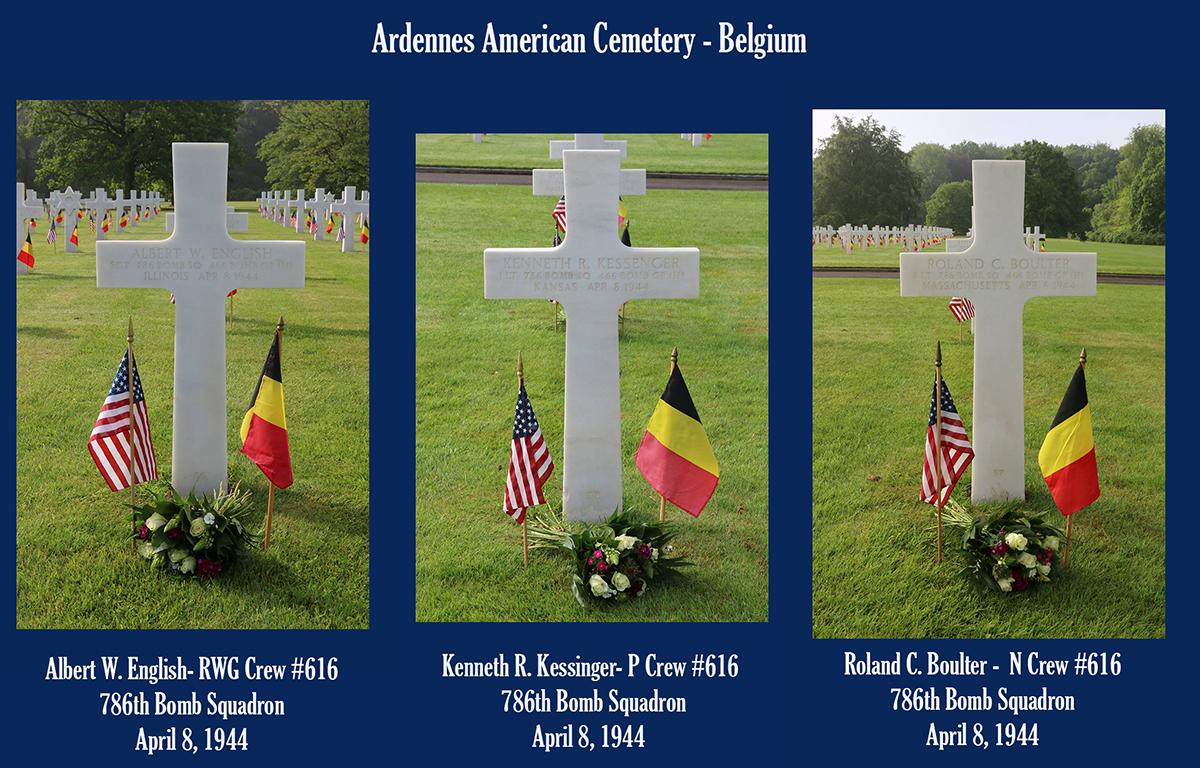
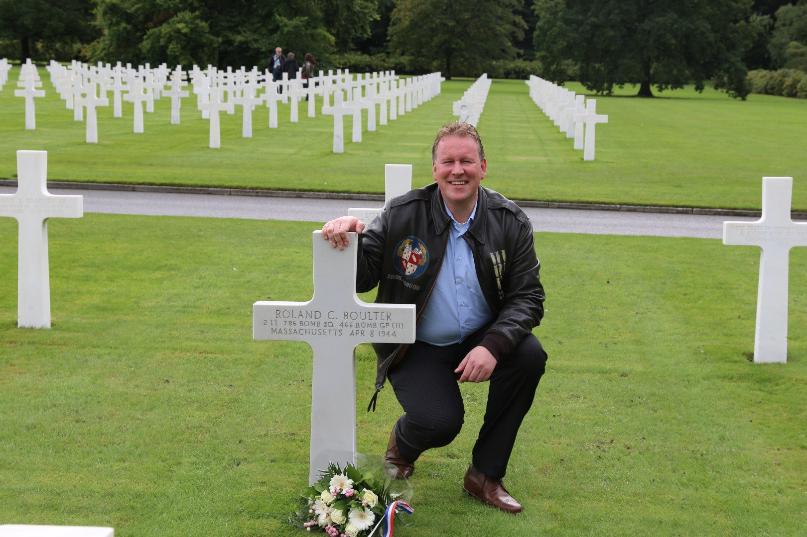
He contacted the 466th BGA and with the help of Researcher, Marcia Melnyk and and Group Historian Chris Brassfield was able to make contact with family members of the Kessenger Crew. Together they pieced together the story. One of the crewmembers, Lewis Straw who survived and was a POW had written a diary and he described the event.
In March 2019 Carlo went to Woltringhausen to meet with local historians and club members to share the stories of those crewmen who survived and returned home. These were combined with the research of the local historians to give a detailed account.
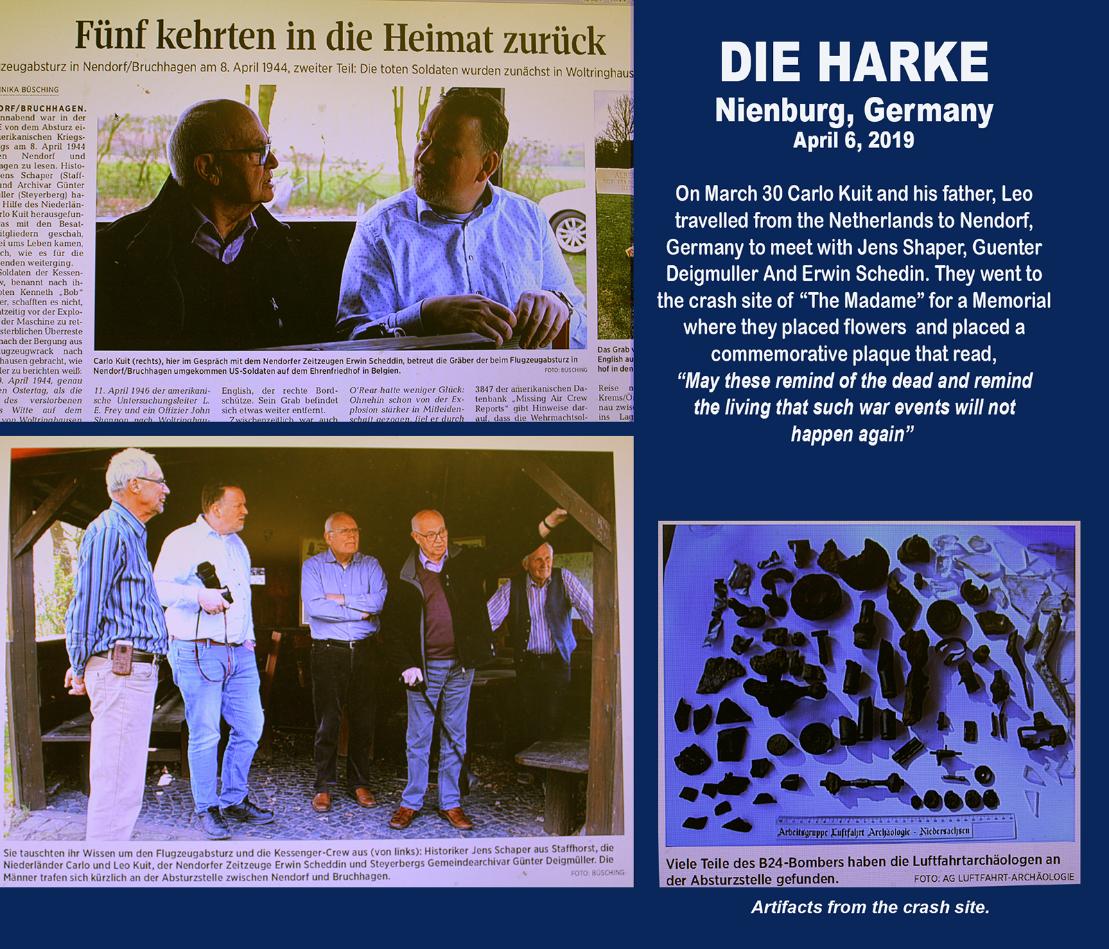
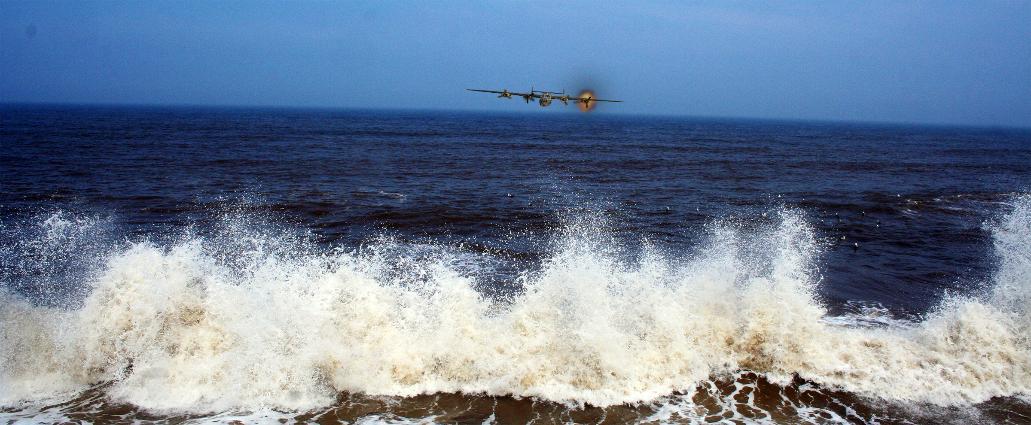
No military aircraft is designed to withstand hard water landings, but the design of the B-24 made it almost impossible to make a successful emergency water landing. The high wing and the weakness of the bombay doors would usually cause the nose to go under or even break the airplane in two on impact and it would quickly sink. If a crewmember survived the initial impact, exposure to the water temperatures of the North Sea would be fatal after 15-20 minutes.
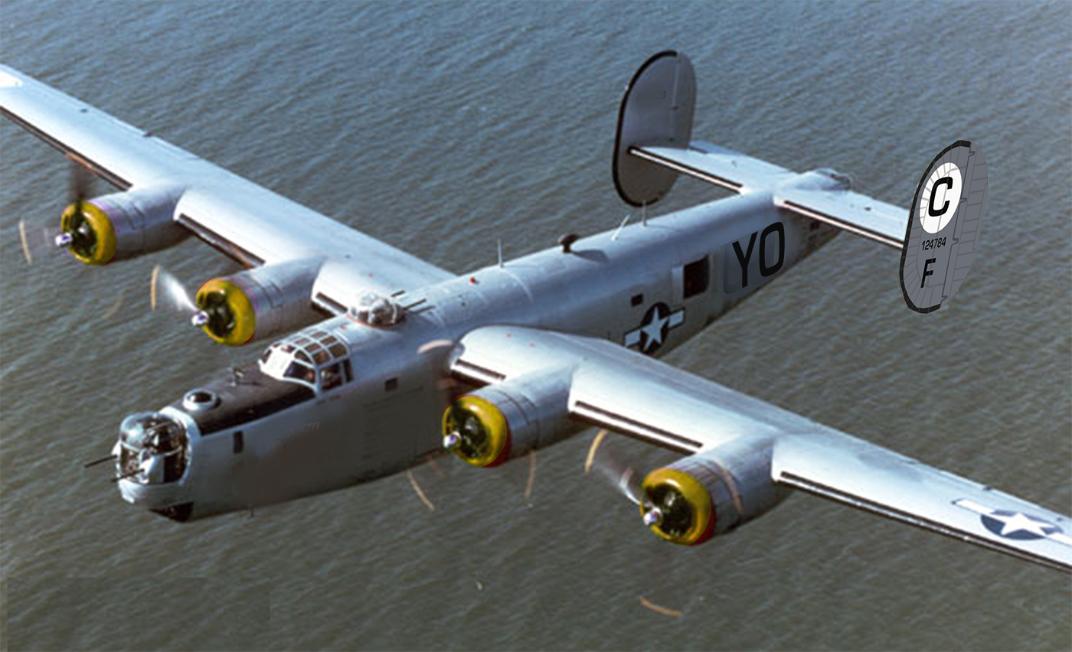
An Exception to the Rule
Captain Ralph S. Bryant, 786th Flight Operations Officer, was pilot on a special assignment with the 389th squadron based at nearby Hethel. On April 29, 1944, they were returning from a tough bombing mission. They had sustained heavy flak damage and the airplane was was losing altitude. The electrical system was gone and Bryant realized he needed to ditch in the North Sea. In a rare successful ditching effort he was able to bring down the B-24 in tact without it breaking up. Two crew-men were killed on impact, but Bryant and 7 others were able to make it to the inflatable dinghy. They got it inflated, but it was attached
to the B-24 frame with a heavy strap. They feverishly tried to find a way to cut the strap to no avail. The B-24 sank and pulled the dinghy to the bottom. The crew were left with only their “Mae West” Life vests for floatation. They struggled in the frigid water for 55 minutes. Some were ready to give up but Capt. Bryant held them together and encouraged them until they were rescued. Captain Bryant was the last one to be pulled from the water. He stood on the deck for a few seconds and then he collapsed and died. William Lakeman, a pilot in the 786th BS stated; "My saddest event of the war was the loss of Captain Ralph Bryant on a mission that our crew didn't go on. He landed a crippled plane in the Channel and was helping others to safety when he keeled over dead, we were told. We had called him the "scout master" and snickered behind his back. Not until he was dead did we realize what a leader he had been. I went to his burial service at Cambridge."
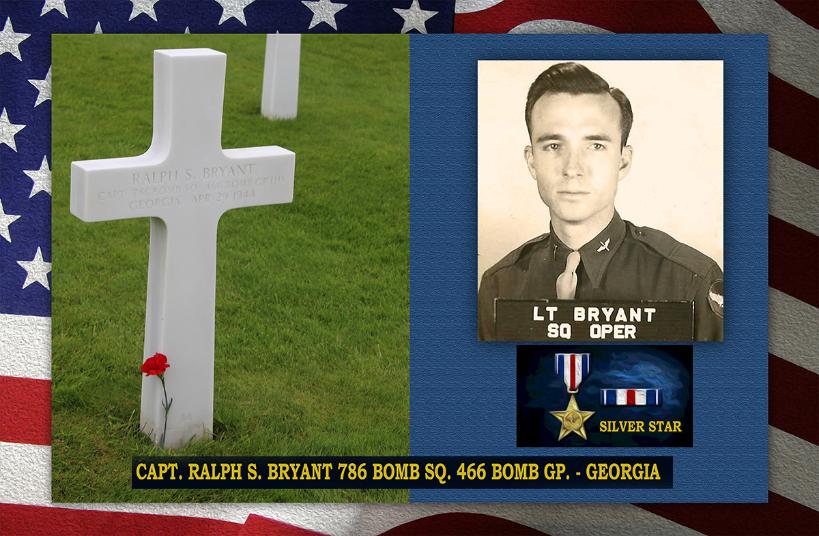
Capt. Bryant was born in 1915 in Georgia. He was awarded the Silver Star Posthumously
and was interred at the American Cemetery in Cambridge, England.
On Easter Sunday, April 9th the day the day after the greatest 466th losses of the war the 785thSquadron flew a combat mission to TUTOW in Germany. Clinton Caverne was flying his first combat mission as first pilot in the B-24 named “Ol Tom Cat”. It was recorded that they were badly damaged but managed to get back to the North Sea. They failed to get back and it was assumed they were forced to ditch. There was no rescue and they were never recovered.
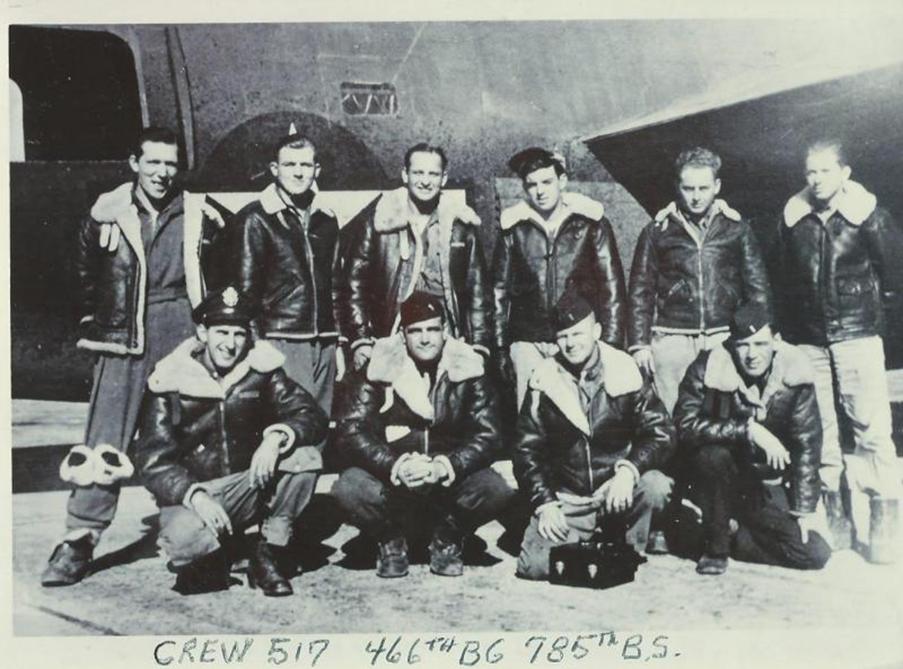
Clinton Caverne Crew #517
Standing: L-R James R Eation(TG), Rolfe.E. Lunde (LWF), William Wentz (E)
Stephen Forton (RWG), Olin Williams (R/O), Wayne Zierk (BTG)
Kneeling: Marney Mason (P) Clinton Caverne (CP), John O'Brien (N),
John Mulkern (B)
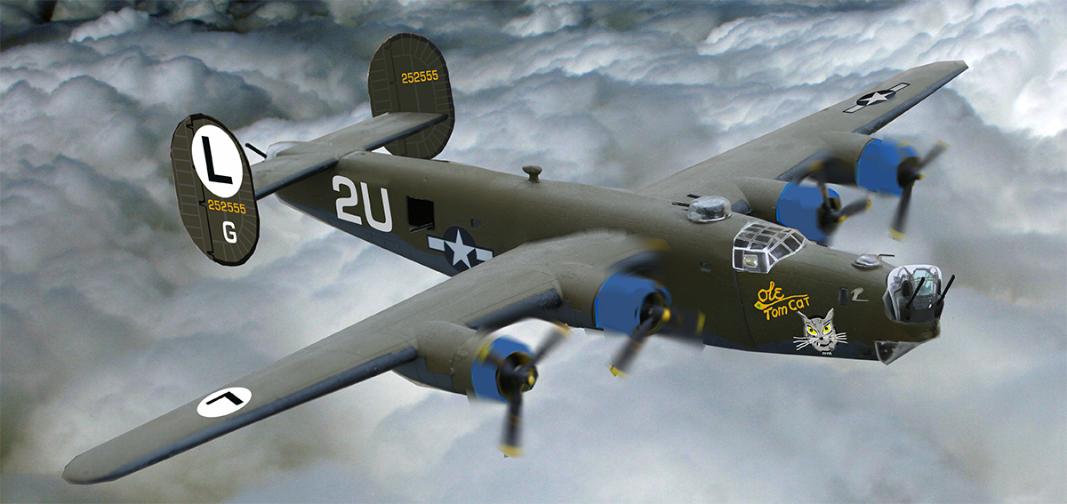
B-24H #42-52555 "Ol' TOM CAT"
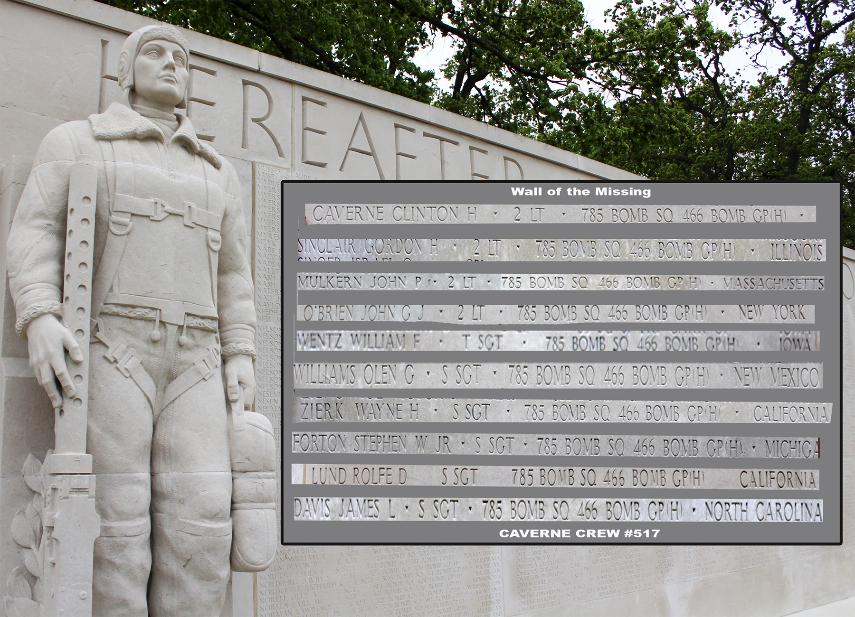
Missing air crews, who were never recovered are memorialized at the American Cemetery in Cambridge, England on the Wall of the Missing.
MID-AIR COLLISION - 17 KIA
